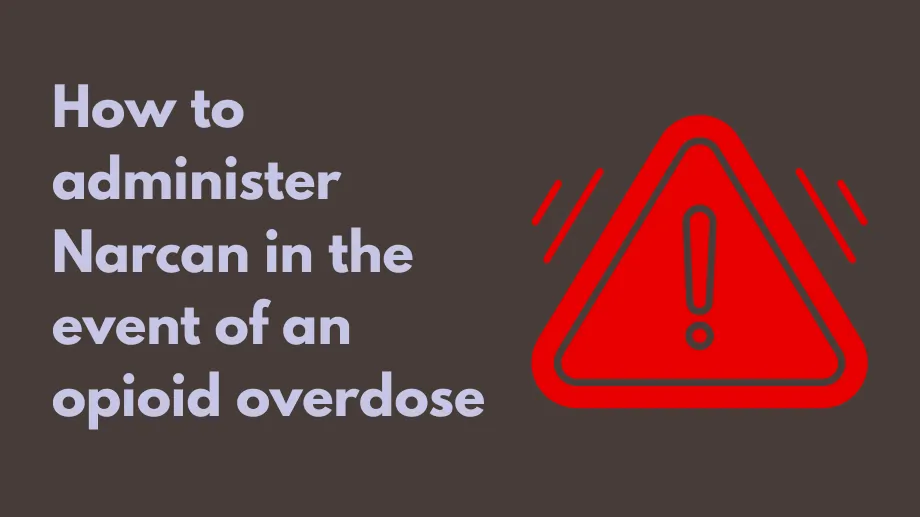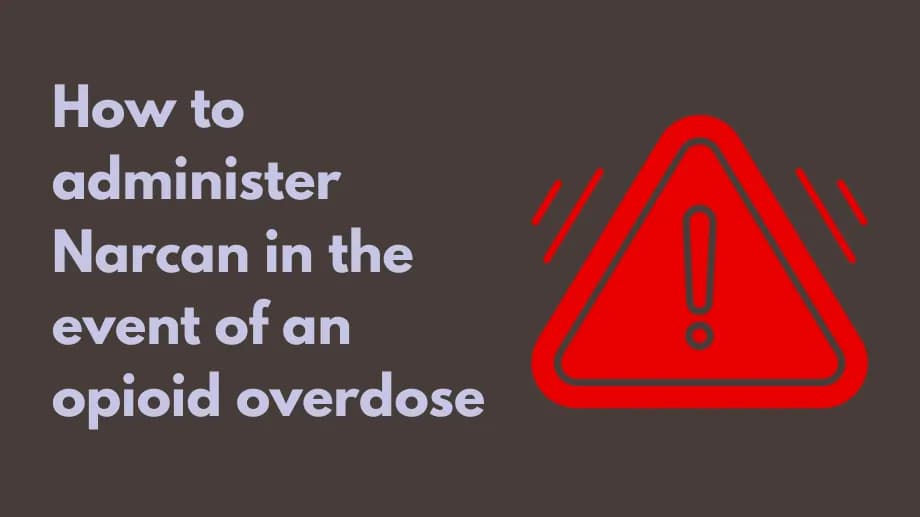How to administer Narcan in the event of an opioid overdose

Narcan (naloxone nasal spray) is a crucial medication that can reverse the effects of an opioid overdose. Here’s a guide on how to administer Narcan safely and effectively.
Understanding Narcan
Narcan is an opioid antagonist used to counteract life-threatening depression of the central nervous system and respiratory system caused by opioid overdose.
How Narcan Works
Narcan binds to opioid receptors, reversing and blocking the effects of other opioids. It can quickly restore normal breathing to a person whose breathing has slowed or stopped as a result of overdosing with heroin or prescription opioid drugs.
Signs of an Opioid Overdose
Indicators include pinpoint pupils, unconsciousness, respiratory distress, and blue lips or fingernails.
Step-by-Step Guide to Administering Narcan
- Check for signs of an overdose: unresponsiveness and breathing difficulties.
- If unresponsive, shout the person’s name and rub the sternum with knuckles to attempt to wake them.
- If there’s no response, call 911 immediately.
- Administer Narcan nasal spray: Insert the tip of the nozzle into one nostril, press the plunger firmly, and remove the nozzle from the nostril.
- If the person does not start breathing normally within 2-3 minutes, administer a second dose in the opposite nostril.
- Perform rescue breathing if necessary and continue to monitor the individual until emergency services arrive.
- Once breathing resumes, place the individual in the recovery position (on their side with the top leg and arm crossed over the body).
Potential Side Effects
While Narcan is life-saving, it can cause withdrawal symptoms such as nausea, headache, and increased blood pressure.
Who Should Carry Narcan?
Individuals who are at risk of opioid overdose, or those who live with or are frequently around others who use opioids, should carry Narcan.
Availability of Narcan
Narcan can be obtained through prescription or over-the-counter in many places, often covered by insurance or available through local public health programs.
Sources
- Centers for Disease Control and Prevention. “Opioid Overdose.” Accessed Nov 5, 2024.
- National Harm Reduction Coalition. “Opioid Overdose Basics-Responding to Opioid Overdose.” Accessed Nov 5, 2024.
- SAMHSA Opioid Overdose Prevention Toolkit. Substance Abuse and Mental Health Services Administration. Accessed Nov 5, 2024.
- Narcan (naloxone hydrochloride) nasal spray. ADAPT Pharma. Accessed Nov 5, 2024.
